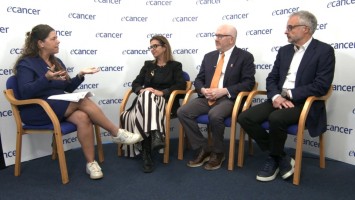Induction chemotherapy added to chemoradiation improves PFS and OS in advanced cervical cancer
Dr Mary McCormack - University College Hospital, London, UK
We looked at patients with locally advanced cervical cancer. Our primary aim was to see if we could improve the survival rate for those patients who have chemoradiotherapy. We did a randomised phase III trial comparing the standard chemoradiation with the same chemoradiation preceded by six weeks of carboplatin and paclitaxel chemotherapy. So a very short course of chemotherapy and then immediately, week 7, start the chemoradiation. We compared the outcome in both groups and we found that more patients were alive without evidence of progression at five years, 73% in the experimental arm compared with 64% in the standard of care arm.
We have data on five year overall survival rates and those rates were numerically 8% higher in the experimental arm. So, for the first time, we have an overall survival rate of 80% in this patient population and that’s something that we’re very excited about.
How could these results impact the future treatment of locally advanced cervical cancer?
I sincerely hope that this approach will be adopted and made available to the patients. There are many advantages – it’s a short course of treatment, so it’s done in six weeks; the drugs are available, they’re cheap, they’re affordable. We know all the toxicities associated with it and now we know from this phase III trial that it works and that it does actually improve overall survival and that it makes people live longer before the cancer recurs. So for all those reasons it’s ready for adoption.








